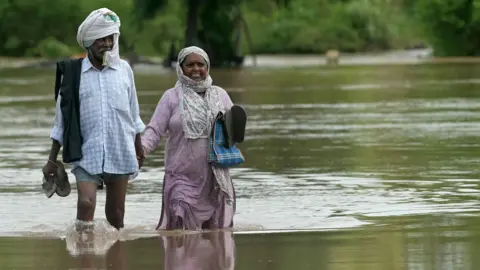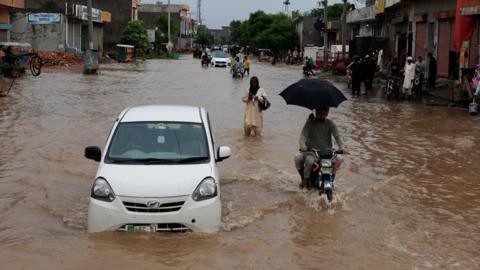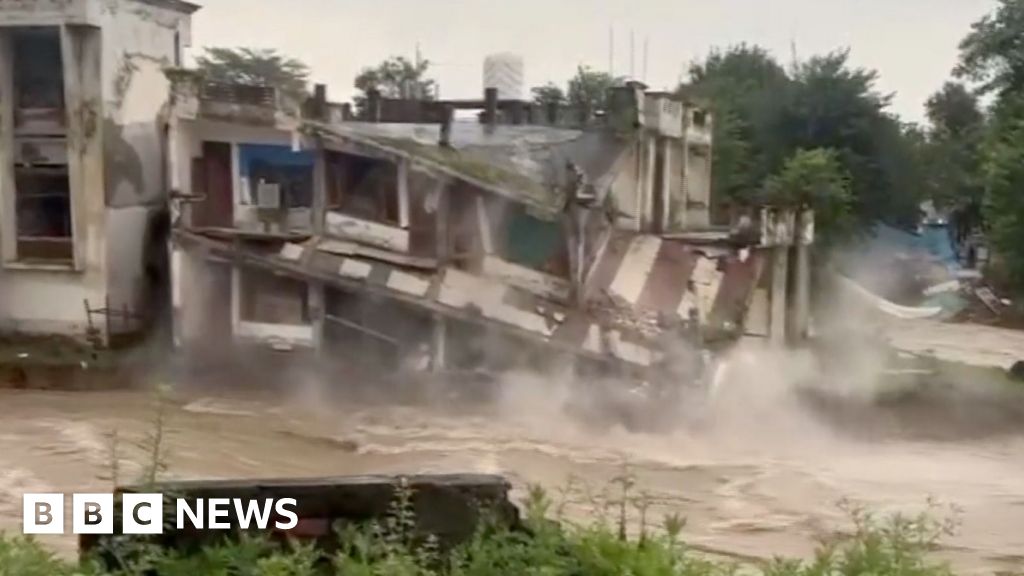As torrential rains gripped Punjab, the National Disaster Management Authority reported dire circumstances across several cities and rural areas. The provincial government is mobilizing rescue operations, while experts emphasize the exacerbation of weather patterns due to climate change.
Heavy monsoon rains began sweeping over Punjab on Wednesday, unleashing destruction across the region. Recent reports confirm that at least 57 individuals have died from flooding and associated hazards, with most fatalities occurring in building collapses and incidents of electrocution, underlining the perilous conditions facing communities.
Villagers in severely affected zones like Chakwal, situated approximately 60 miles from the capital Islamabad, described their devastation. Malak Jamil, a local farmer, shared, “The floodwaters engulfed our homes and crops before my eyes... I have no idea how I will recover from this,” as he surveyed the damage that had ravaged his livelihood.
Since the onset of the monsoon season in June, total casualties have risen to at least 180 due to rain-related disasters, prompting the Pakistani military to deploy helicopters for evacuations in hard-hit regions. Authorities have implored residents to follow evacuation orders, highlighting the urgent need for safety as floodwaters rise.
The United Nations Children's Fund has raised alarms about the significant risks facing children amid the ongoing flooding, citing threats of drowning, injuries from collapsing structures, and dangerous spikes in waterborne diseases. The dire consequences reflect a pattern of extreme weather events linked to global climate change, with increasing rainfall intensity identified in recent studies.
Government agencies continue to grapple with the challenges posed by this season's severe weather, as many experts underline the urgent need for strategies to mitigate climate risks and enhance community resilience. As rainfall lessens, officials emphasize the importance of vigilance and safety measures in the weeks to come.
Heavy monsoon rains began sweeping over Punjab on Wednesday, unleashing destruction across the region. Recent reports confirm that at least 57 individuals have died from flooding and associated hazards, with most fatalities occurring in building collapses and incidents of electrocution, underlining the perilous conditions facing communities.
Villagers in severely affected zones like Chakwal, situated approximately 60 miles from the capital Islamabad, described their devastation. Malak Jamil, a local farmer, shared, “The floodwaters engulfed our homes and crops before my eyes... I have no idea how I will recover from this,” as he surveyed the damage that had ravaged his livelihood.
Since the onset of the monsoon season in June, total casualties have risen to at least 180 due to rain-related disasters, prompting the Pakistani military to deploy helicopters for evacuations in hard-hit regions. Authorities have implored residents to follow evacuation orders, highlighting the urgent need for safety as floodwaters rise.
The United Nations Children's Fund has raised alarms about the significant risks facing children amid the ongoing flooding, citing threats of drowning, injuries from collapsing structures, and dangerous spikes in waterborne diseases. The dire consequences reflect a pattern of extreme weather events linked to global climate change, with increasing rainfall intensity identified in recent studies.
Government agencies continue to grapple with the challenges posed by this season's severe weather, as many experts underline the urgent need for strategies to mitigate climate risks and enhance community resilience. As rainfall lessens, officials emphasize the importance of vigilance and safety measures in the weeks to come.



















